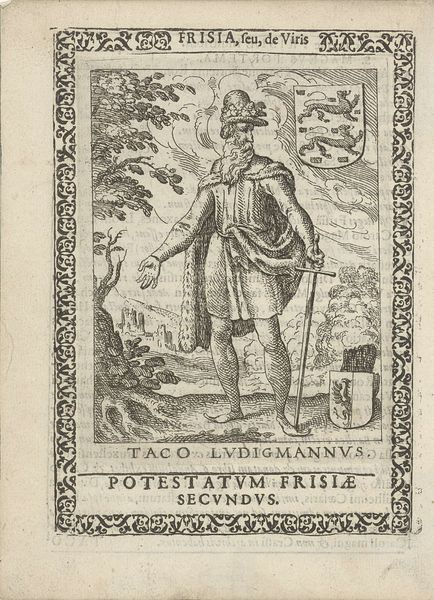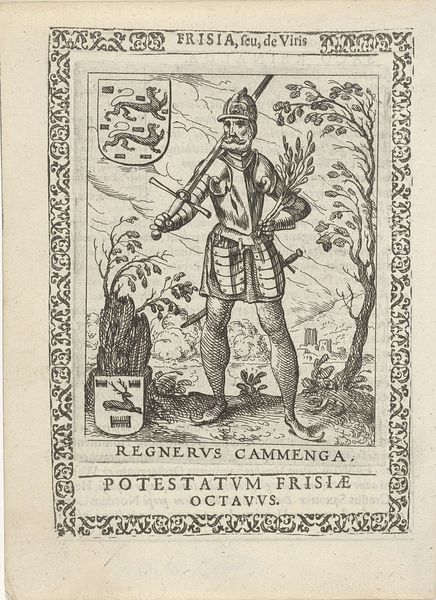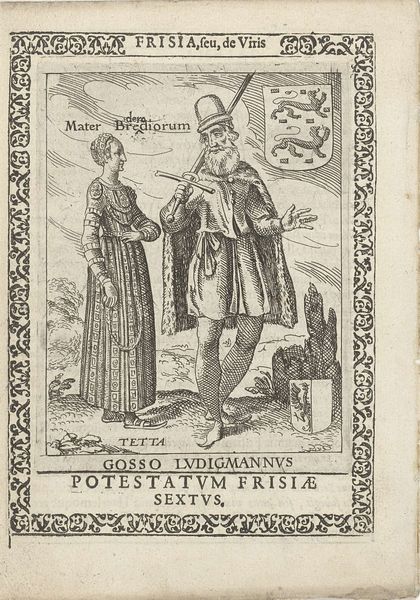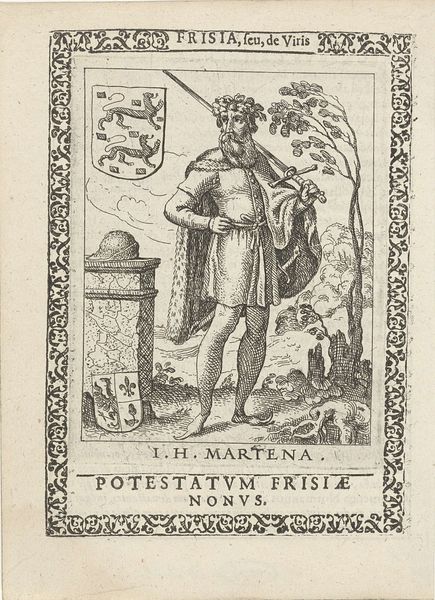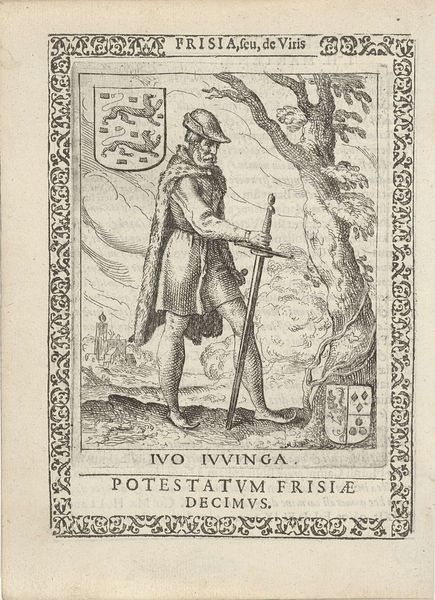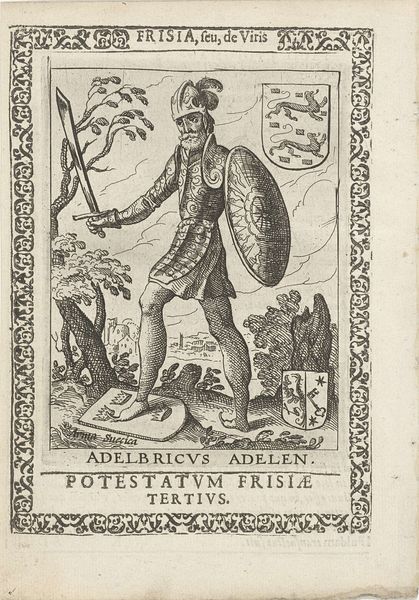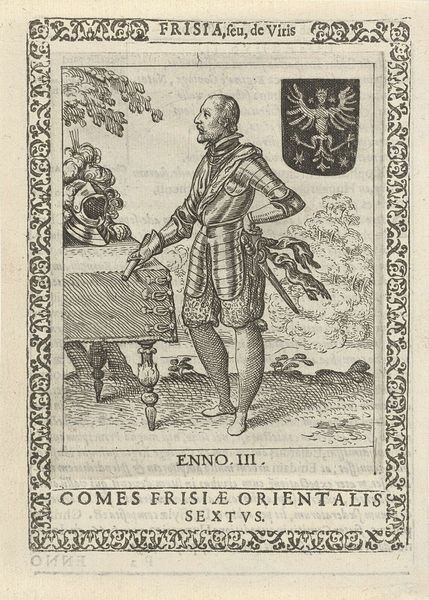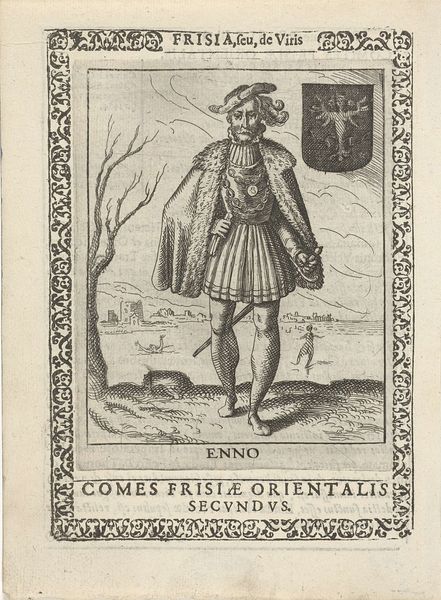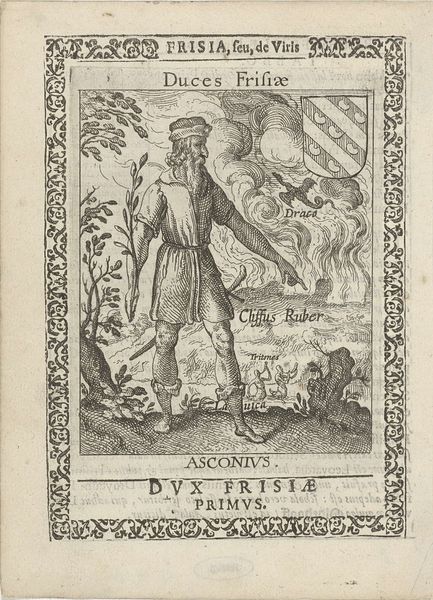
Magnus Forteman, eerste potestaat van Friesland 1618 - 1620
0:00
0:00
print, engraving
#
portrait
#
baroque
# print
#
figuration
#
line
#
history-painting
#
engraving
#
realism
Dimensions: height 125 mm, width 100 mm, height 158 mm, width 115 mm
Copyright: Rijks Museum: Open Domain
Curator: Here we have a print entitled "Magnus Forteman, eerste potestaat van Friesland" created between 1618 and 1620 by Pieter Feddes van Harlingen, part of the Rijksmuseum collection. What's your initial read of this image? Editor: It strikes me as a powerful assertion of authority, though stiff and somewhat unsettling. The subject's gaze feels… distant, almost vacant, despite all the symbols of power surrounding him. The overall impact is one of almost melancholic pride. Curator: The figure of Magnus Forteman holds a symbolic weight much greater than his physical representation in this engraving. Notice the elaborate heraldry—the coat of arms and banner laden with symbolism of Frisian power and autonomy. These speak to a deeper longing for cultural identity and self-governance. The visual language reminds me of the potent power of visual motifs during periods of nation-building. Editor: Precisely! But I see something else too. The very act of creating this image is a political statement. It reinforces a constructed history, solidifying a particular narrative about Friesland's past and its leaders at a moment when such narratives were crucial to forging regional identities. What we see as history is often a carefully curated selection of symbols and stories, and this image is a prime example. The question becomes, whose history are we really looking at? And whose voices are excluded from this grand representation of Frisian power? Curator: A good question, because you are right to look at its sociopolitical meaning within history. What's intriguing is that he seems posed on a landscape of shifting ground, with foliage underneath that could be interpreted as symbolic of ancestry or origins, firmly grounding Magnus, whereas turbulent waters give him dynamism and forward-looking movement. It speaks of both foundation and aspiration, a constant negotiation with heritage, which continues today. Editor: Absolutely. We need to critically examine those foundations, unpack those symbols of power, and ask what kind of message this image sends, both then and now, in its continued presence in our museums and galleries. Curator: So, in reflecting, this work presents the eternal interplay between image, identity, and the power of history—both to connect us and to subtly shape us. Editor: I’d add, it reminds us that art isn’t just about aesthetics, but is very much involved with struggles for self-definition, justice and social change.
Comments
No comments
Be the first to comment and join the conversation on the ultimate creative platform.
